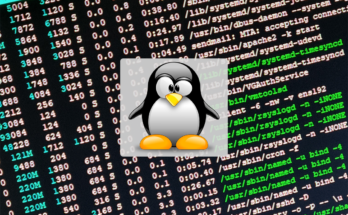Hier zeige ich euch wie ihr motionEye mit Motion manuell installiert. Hier habe ich die Installation auf Debian (armbian) vorgenommen.
Die Installation:
Zu allererst sollte man das System aktualisieren:
apt-get update && apt-get ugrade
Die benötigten Pakete installieren:
apt-get install motion ffmpeg v4l-utils libmicrohttpd12
Aktuellste Version von Motion herunterladen:
Primär hier schauen: https://github.com/Motion-Project/motion/releases/download/release-4.2.2/pi_stretch_motion_4.2.2-1_armhf.deb
Wenn für euch nichts Passendes da ist (z.B. fehlte für mich hier armhf (ohne PI vorne), könnt ihr hier meine aktuelle kompilierte Version herunterladen:
Die Installierte Motion Version Anzeigen:
motion -h
Weitere benötigte Pakete installieren:
apt-get install python-pip python-dev python-setuptools curl libssl-dev libcurl4-openssl-dev libjpeg-dev libz-dev
Überprüfen ob Python 2.7 oder höher installiert ist:
python -V
motionEye installieren:
pip install -U wheel
pip install motioneye
Konfigurationsordner vorbereiten:
mkdir -p /etc/motioneye
cp /usr/local/share/motioneye/extra/motioneye.conf.sample /etc/motioneye/motioneye.conf
Medienordner vorbereiten:
mkdir -p /var/lib/motioneye
motionEye dem Systemstart hinzufügen und starten:
cp /usr/local/share/motioneye/extra/motioneye.systemd-unit-local /etc/systemd/system/motioneye.service
systemctl daemon-reload
systemctl enable motioneye
systemctl start motioneye
Zugriff auf das Webinterface:
Webseite über Port 80 erreichbar machen:
iptables -t nat -A PREROUTING -i enx001e06366e51 -p tcp –dport 80 -j REDIRECT –to-port 8765
Weitere nützliche Infos:
Die Aktuell publizierte Version findet ihr auf:
https://github.com/ccrisan/motioneye/releases
motionEye updaten:
pip install motioneye –upgrade
Neustarten:
systemctl restart motioneye


Hallo Tobias,
zuerst mal vielen Dank für diese Anleitung. Ich hänge ein wenig bei dem Punkt
Aktuellste Version von Motion herunterladen:
ich bin auf
https://github.com/Motion-Project/motion/releases
und es sollte das File sein
stretch_motion_4.3.2-1_armhf.deb
das habe ich herungergeladen, bin in den ordner dwonloads und sollte das packet insallieren… aber es koot dieser Fehler:
pi@raspberrypi:~/Downloads $ ls
stretch_motion_4.3.2-1_armhf.deb
pi@raspberrypi:~/Downloads $ sudo apt install stretch_motion_4.3.2-1_armhf.deb
Paketlisten werden gelesen… Fertig
Abh\u00e4ngigkeitsbaum wird aufgebaut.
Statusinformationen werden eingelesen…. Fertig
E: Paket stretch_motion_4.3.2-1_armhf.deb kann nicht gefunden werden.
E: Mittels des Musters \u00bbstretch_motion_4.3.2-1_armhf.deb\u00ab konnte kein Paket gefunden werden.
E: Mittels regul\u00e4rem Ausdruck \u00bbstretch_motion_4.3.2-1_armhf.deb\u00ab konnte kein Paket gefunden werden.
… was mache ich falsch?
gruss und im voraus vielen Dank
Hi,
versuch es mal mit dem vollen Pfad zur Datei. Zum Beispiel (müsstest du ggf. anpassen): apt install /home/pi/downloads/stretch_motion_4.3.2-1_armhf.deb
Hallo Tobias, bin jetzt einen kleinen Schritt weiter, der der Pi findet jetzt die Datei, aber kann nichts mir ihr anfangen:
pi@raspberrypi:~/Downloads $ sudo apt install /home/pi/downloads/stretch_motion_4.3.2-1_armhf.deb
Paketlisten werden gelesen… Fertig
E: Nicht unterstützte Datei /home/pi/downloads/stretch_motion_4.3.2-1_armhf.deb auf Befehlszeile angegeben
pi@raspberrypi:~/Downloads $ sudo apt install /home/pi/downloads/pi_stretch_motion_4.2.2-1_armhf.deb
Paketlisten werden gelesen… Fertig
E: Nicht unterstützte Datei /home/pi/downloads/pi_stretch_motion_4.2.2-1_armhf.deb auf Befehlszeile angegeben
Grundsätzliche Frage: was ist denn das richtige Packet: pi_strech…armhf oder das stretch….armhf
Hallo Tobias,
es lag an mir – habe beim Pfad die Gross/klein Schreibung nicht beachtet:
jetzt fehlen noch libraries: – hast Du die nachinstalliert?
Die folgenden Pakete haben unerfüllte Abhängigkeiten:
motion : Hängt ab von: libavcodec57 (>= 7:3.2.15) ist aber nicht installierbar oder
libavcodec-extra57 (>= 7:3.2.15) ist aber nicht installierbar
Hängt ab von: libavdevice57 (>= 7:3.2.15) ist aber nicht installierbar
Hängt ab von: libavformat57 (>= 7:3.2.15) ist aber nicht installierbar
Hängt ab von: libavutil55 (>= 7:3.2.15) ist aber nicht installierbar
Hängt ab von: libmariadbclient18 (>= 10.1.47-0+deb9u1) ist aber nicht installierbar
Hängt ab von: libswscale4 (>= 7:3.2.15) ist aber nicht installierbar
Hängt ab von: libwebpmux2 (>= 0.5.1) ist aber nicht installierbar
E: Probleme können nicht korrigiert werden, Sie haben zurückgehaltene defekte Pakete.
Hallo ich habe auch ein Problem, ich versuche Motioneye auf einem Windows10 Rechner in der Debian APP zu installieren. Ist mir auf einem anderen Rechner auch schon gelungen.
Im Moment hänge ich beim Punkt Systemsart, bei Systemctl daemon-reload bekomme ich als Antwort: System has not been booted with systemd as init system (PID1). Can’t operate. Faild to connect to bus: Host is down. Hast eine Idee was mich machen muß?
Gruß Michael
Es ist kein FTP upload möglich. Einstellungen werden akzeptiert trotzdem kein FTP upload von Aufnahmen. Bei einem Motioneye Image funktioniert der Upload einwandfrei da es hier noch spezielle Service einstellungen gibt.